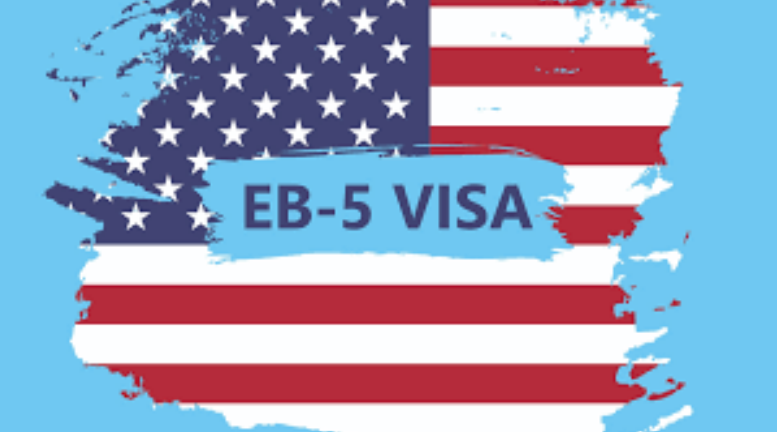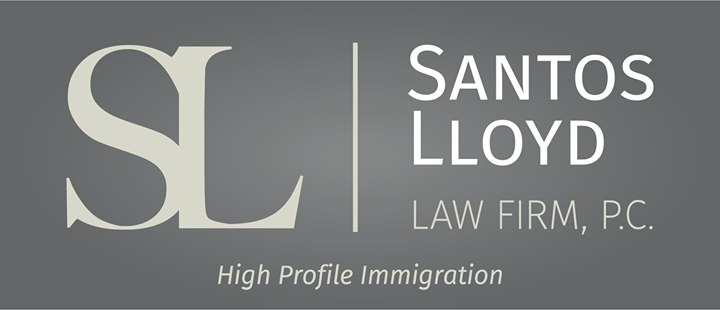La résurgence de l'EB-5
Kyle Huffman • May 16, 2024
Click here to read this article in English
Le programme de visa d'immigrant investisseur EB-5 a longtemps été une source d'opportunités pour ceux qui cherchaient à s'étab lir aux États-Unis. Cependant, ces dernières années, son attrait s'est estompé en raison de préoccupations concernant l'intégrité, les abus du programme et les incertitudes quant à son avenir. Pourtant, avec l'adoption de la loi de 2022 sur la réforme et l'intégrité du programme EB-5, ce dernier est sur le point de renaître et de capter à nouveau l'attention des investisseurs du monde entier.
Pour ceux qui ne le savent pas, le programme EB-5 offre aux investisseurs étrangers et à leur famille une voie d'accès à la résidence permanente aux États-Unis en investissant un montant minimum dans une entreprise américaine qualifiée. Cet investissement doit créer ou préserver un certain nombre d'emplois pour les travailleurs américains. Historiquement, le programme a été populaire parmi les personnes aisées qui cherchaient non seulement à obtenir une résidence, mais aussi à contribuer à l'économie américaine.
Toutefois, ces dernières années, le programme a fait l'objet de critiques et d'un examen minutieux en raison d'allégations de fraude, d'abus et d'inefficacité. Les investisseurs sont devenus méfiants et la popularité du programme a diminué. Les candidats potentiels hésitaient à engager des fonds importants dans un programme entaché d'incertitudes et d'obstacles bureaucratiques.
La loi de 2022 sur la réforme et l'intégrité du programme EB-5
a vu le jour. Cette loi historique répond à de nombreuses préoccupations qui ont affecté le programme ces dernières années. Parmi ses principales dispositions figurent le relèvement des seuils d'investissement, des mesures de contrôle plus strictes et des réformes visant à promouvoir l'intégrité et la transparence du programme.
L'un des changements les plus importants introduits par la loi de réforme consiste à donner aux services de citoyenneté et d'immigration des États-Unis (USCIS) les moyens de contrôler et d'enquêter plus efficacement sur les cas potentiels de fraude ou d'abus. En outre, la loi introduit des mesures visant à rationaliser le processus de demande, en réduisant les formalités administratives et en accélérant le traitement des demandes EB-5, ce qui se traduit par un traitement plus rapide des investissements légitimes.
L'adoption de la loi de 2022 sur la réforme et l'intégrité du programme EB-5 a donné un nouveau souffle au programme EB-5, ravivant l'intérêt des investisseurs et des acteurs de l'immigration. Grâce à ses mesures d'intégrité renforcées et à ses procédures rationalisées, le programme représente à nouveau une opportunité convaincante pour ceux qui cherchent à poursuivre le rêve américain.
Nous assistons déjà à un regain d'intérêt pour le programme EB-5 de la part d'investisseurs du monde entier. Les promoteurs et les centres régionaux saisissent l'occasion de tirer parti de ce regain d'enthousiasme, en présentant un large éventail d'opportunités d'investissement dans divers secteurs et régions.
En outre, la revitalisation du programme EB-5 a des implications significatives pour l'économie américaine. En attirant les investissements étrangers, le programme peut créer des emplois, stimuler la croissance économique et faciliter le développement des communautés dans le besoin. De plus, il souligne l'engagement des États-Unis à accueillir et à exploiter les talents et les ressources des investisseurs immigrés.
L'adoption de la loi de 2022 sur la réforme et l'intégrité du programme EB-5 marque un tournant dans l'histoire de ce programme. En répondant à des préoccupations de longue date et en mettant en œuvre des réformes globales, la loi a rétabli la confiance dans le programme et l'a positionné pour un avenir prospère. Alors que les investisseurs et les promoteurs saisissent les opportunités offertes par le programme EB-5 revitalisé, nous prévoyons un regain d'intérêt et d'activité, réaffirmant le statut du programme en tant que pierre angulaire de la politique d'immigration et du développement économique des États-Unis.
J'encourage tous les investisseurs potentiels à rencontrer l'un de nos avocats qualifiés pour discuter de la possibilité d'obtenir la résidence permanente, et éventuellement la citoyenneté, grâce à un investissement admissible dans le cadre du programme de visa d'investisseur immigrant EB-5. Nous serons ravis de travailler avec vous!
Ce blog n'est pas destiné à fournir des conseils juridiques et rien ici ne doit être interprété comme établissant une relation avocat-client. Veuillez prendre rendez-vous avec un avocat spécialisé en droit de l'immigration avant d'agir sur la base de toute information lue ici.
Kyle Huffman
Similar Posts

The EB-5 Immigrant Investor Visa Program has long stood as a beacon of opportunity for those seeking to establish roots in the United States. However, in recent years, its allure dimmed due to concerns surrounding integrity, program abuse, and uncertainties regarding its future. Yet, with the passage of the EB-5 Reform & Integrity Act of 2022 , the EB-5 program finds itself on the brink of a renaissance, once again capturing the attention of investors worldwide. For those unfamiliar, t he EB-5 program offers foreign investors and their families a pathway to permanent residency in the United States by investing a minimum amount in a qualifying U.S. business venture . This investment must create or preserve a certain number of jobs for American workers. Historically, the program has been popular among affluent individuals seeking not only residency but also the opportunity to contribute to the U.S. economy. However, in recent years, the program faced criticism and scrutiny due to allegations of fraud, abuse, and inefficiencies. Investors became wary, and the program's popularity waned. Prospective applicants were hesitant to commit significant funds to a program plagued by uncertainties and bureaucratic hurdles. Enter the 2022 EB-5 Reform and Integrity Act . This landmark legislation addresses many of the concerns that have plagued the program in recent years. Among its key provisions are increased investment thresholds, stricter oversight measures, and reforms aimed at promoting integrity and transparency within the program. One of the most significant changes introduced by the reform act is empowering the United States Citizenship and Immigration Services (USCIS) to more effectively monitor and investigate potential instances of fraud or abuse. Additionally, the act introduces measures to streamline the application process, reducing bureaucratic red tape and expediting the adjudication of EB-5 petitions, resulting in faster processing for legitimate investments. The passage of the 2022 EB-5 Reform and Integrity Act has injected new life into the EB-5 program, reigniting interest among investors and immigration stakeholders alike. With its enhanced integrity measures and streamlined processes, the program once again represents a compelling opportunity for those seeking to pursue the American dream. Already, we are witnessing a resurgence of interest in the EB-5 program from investors worldwide. Developers and regional centers are seizing the opportunity to capitalize on the renewed enthusiasm, presenting a diverse array of investment opportunities across various industries and regions. Moreover, the EB-5 program's revitalization holds significant implications for the U.S. economy. By attracting foreign investment, the program has the potential to create jobs, spur economic growth, and facilitate the development of communities in need. Furthermore, it underscores the United States' commitment to welcoming and harnessing the talents and resources of immigrant investors. The passage of the 2022 EB-5 Reform and Integrity Act marks a pivotal moment in the history of the EB-5 program. By addressing longstanding concerns and implementing comprehensive reforms, the act has restored confidence in the program and positioned it for a prosperous future. As investors and developers alike embrace the opportunities presented by the revitalized EB-5 program, we anticipate a resurgence in interest and activity, reaffirming the program's status as a cornerstone of American immigration policy and economic development. I encourage any prospective investors to meet with one of our skilled attorneys to discuss the possibility of securing permanent residency, and eventually citizenship, through a qualifying investment under the EB-5 Immigrant Investor Visa Program. We look forward to working with you!

Embarking on the EB-5 immigration journey is both a profound personal endeavor and a strategic investment decision. For individuals seeking to make the United States their new home while contributing to its economic landscape, the EB-5 Immigrant Investor Program offers a pathway unlike any other. This program, established by the U.S. government in 1990, provides foreign investors with the opportunity to obtain permanent residency in the United States by investing in job-creating enterprises . However, navigating the complexities of the EB-5 process requires a thorough understanding of its intricacies, requirements, and potential pitfalls. In this guide, we provide a brief overview of the steps and documents involved in the EB-5 immigration process, shedding light on its key components, eligibility criteria, investment options, and procedural steps, empowering prospective investors with the knowledge needed to embark on this transformative journey with confidence. Before selecting a project and making the investment, it is important for an EB-5 investor to meet with an immigration attorney to strategize for the application. It is required to show the Immigration Service that all funds used in the investment were lawfully earned and retained , so your attorney will want to understand where the money for the investment is coming from and where it has been held since it was earned. Once satisfied with the source and tracing of funds, the investor can select a project to invest in. Following the passage of the EB-5 Reform & Integrity Act, certain investment projects have already been pre-approved by USCIS by filing form I-956 and receiving designation as a Regional Investment Center. The required minimum investment is $1,050,000 by default; however, this amount is reduced for investment centers in “Targeted Employment Areas” to $800,000 . After submitting the investment to the regional center, the investor will then work with their attorney to create the I-526 petition. At this stage of the case, it is time to show USCIS the source and tracing of all of the funds used for the investment. The types documentation required in order to show the lawful source and tracing of funds is extremely broad and highly dependent on where the money is coming from in each particular case, but the most common documents include W-2 or 1099 tax forms, federal and state tax returns, bank account statements, purchase and sale contracts from the sale of real estate, stock certificates, loan contracts, inheritance documents, and wire transfer records, among many other possibilities . EB-5 applicants can either process their green cards through USCIS by filing an I-485 application for Adjustment of Status, or process through the consulate in their home country . If already in the United States on another valid status, the Adjustment of Status application can be submitted concurrently with the I-526 petition. If processing through a consulate overseas, the investor will have to wait until the I-526 is approved before beginning the consular process. The primary applicant, along with a spouse and any unmarried children under 21 years of age are able to receive permanent residency through the EB-5 process. At the completion of either process, whether requesting the Green Card within the United States or seeking entry through a consulate, USCIS will issue conditional green cards, with a validity of two years . Within the last three months before the conditional green card expires , the investor and family will need to file an I-829 application for removal of conditions on the green card. At this stage, nearly two years after the investment has been made, the Immigration Service is confirming whether the investment remains in the project and the requisite 10 jobs have been created . Following I-829 approval, the investor and their family will receive permanent green cards, with a 10-year validity. The investor and family will be able to apply for United States Citizenship five years after the initial green card is issued . The conditional green card does count for this purpose, so citizenship will become a possibility approximately 3 years after the permanent green cards are issued. In conclusion, the EB-5 Immigrant Investor Program stands as a unique avenue for individuals around the globe to fulfill their aspirations of living and thriving in the United States. Through strategic investment and dedication to job creation, participants not only secure permanent residency but also contribute to the nation's economic growth and prosperity. However, it is crucial for prospective investors to approach the EB-5 process with meticulous planning, thorough research, and expert guidance to navigate its complexities successfully . By understanding the program's requirements, exploring investment options, and adhering to procedural guidelines, aspiring immigrants can embark on their EB-5 journey with clarity and confidence. Ultimately, the EB-5 program represents more than just a pathway to residency—it embodies the spirit of entrepreneurship, innovation, and opportunity that defines the American dream. If you believe you may qualify for the EB-5 program or if you have any questions, please schedule a consultation with one of our experienced attorneys and we will be more than happy to assist you.

Once you have connected with a college program, have been admitted to the school, and deemed eligible to compete athletically, you will need to secure an F-1 student visa in order to actually attend your new college and begin your time as a student athlete. The first step in the visa process is to receive your Form I-2

For many talented athletes around the world, U.S. college athletics represent a remarkable opportunity to combine elite athletic competition with higher education. In sports such as basketball, soccer, track and field, and tennis, among others, hundreds of colleges and universities across the United States offer struct

Under the new regulation, if a person filed or files Form I-589, Application for Asylum and for Withholding of Removal after October 1, 2024, and the application remains pending with USCIS for 365 days, the applicant must pay an Annual Asylum Fee (AAF) on the one-year anniversary of his or her filing date.



